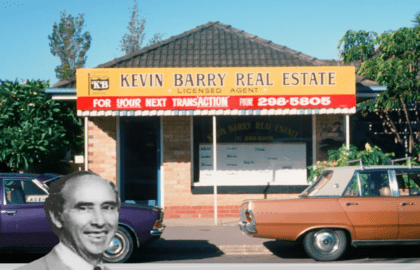According to the RP Data-Rismark Home Value Index results for June 2013, combined capital city home values increased by 3.8% over the 201/13 financial year. The growth in home values has been moderate, as we have noted in recent weeks, the response to the low mortgage rate environment has not been as strong as in the past. This begs the question where to from here?
The June results of the RP Data-Rismark Home Value Index showed a variety of performances across the capital cities and as I see it, the performances of individual capital city housing markets are likely to continue to diverge based on their own unique circumstances. We also know that activity is being driven by investors (who can be fickle and exit the market quickly) and upgraders whose activity is most likely linked to the recent pick-up in consumer sentiment and in some instances the recent pick-up may not continue based on the direction of the economy from here.
Broadly speaking, I can’t see anything in the current housing or broader economic conditions which will see the market’s performance return to that which we saw prior to the financial crisis for a number of reasons.
Firstly, household debt to disposable income currently sits at 147.3%. No doubt Australian households have a large amount of debt, most of which (133.2%) is housing debt. If you look at the chart below, you will see that the debt to disposable income ratio has been virtually unchanged since the end of 2005, which is seven and a half years ago now! Clearly households have reached the limits to how much debt they can take on. Whether this limit continues into the future remains to be seen but at the moment it is clear we largely don’t want to take on more household debt and around 90% of this debt is related to housing.
Secondly, and which directly relates to the first point, households have increased their level of savings and shown less of a propensity to spend. The national accounts data includes an item for the household saving ratio and looking at this over time (below) provides valuable insight. Over the past 12 months, the household savings ratio has been recorded at 10.5% and over the past five years it has been recorded at an average of 9.8%. The level of household savings currently is at its highest level since late 1987 (25 years ago now) and the recent trend of higher savings has reversed a 30 year trend over which time savings by households continued to deteriorate.
Thirdly, consumers are changing the way they spend and doing it with their own money rather than with credit cards. Over the 12 months to May 2013, the number of credit card accounts increased by just 2.1%, in comparison debit card accounts increased by 6.2%. Total credit card transactions increased by 6.9% over the year but cash advances fell by -2.4%. Total debit card transactions increased by 13.9% over the year. Credit cards had an average outstanding balance of $3,236 and the average credit limit was $9,091. On an historical level both are quite high however, the average outstanding balance was down -3.5% over the year which was the biggest year-on-year fall on record and the average credit limit was -1.0% lower on the year a near record fall.
The previous run-up in home values had been assisted by significant changes to economic conditions such as financial deregulation, significant falls in mortgage rates, a large reduction in unemployment, much lower inflation and strong growth in housing credit.
Mortgage rates are below historic levels currently however the impact of shifting from 17% at the start of the 1990’s to around 7% at the end of the decade is not as significant as a further 1% to 2% reduction.
It’s a similar story for unemployment which shifted from around 11% in 1992 to around 6.5% by the end of the decade. In fact, an anticipated increase in unemployment from the current low levels is one of the major factors contributing to the changes to consumer behaviour.
In 1990, annual inflation was running at 7%, by the end of the decade it had fallen to around 2% and today it sits at 2.5%. The lower level of inflation since the end of the last recession has clearly contributed to the lower mortgage rates which in-turn has assisted the run-up in home values.
Credit growth throughout the early 2000’s was sitting at an annual rate of 16% to 20% as the housing market surged. Ever since 2004, growth in housing credit has been slowing and over the past year credit has grown at a near record low level of 4.5%.
In my opinion, none of these economic measures are likely to shift as significantly as they have in the past and therefore any changes are not as likely to be as conducive to significant growth in home values as they have been in the past.
Now looking at individual capital city markets we can see my anticipated variances in performance over the coming year.
I suspect Sydney will continue to be one of the standout performers and will continue to see values grow, this is largely due to the fact that value growth has failed to beat inflation over the past decade and dwelling construction remains insufficient.
Melbourne continues to surprise however, it has not had a significant period of value correction as what has been seen across other major capital cities such as Sydney, Brisbane and Melbourne. We also know that housing supply is much more sufficient across the city than it is across most other major capital cities. Although values are currently rising on the back of low mortgage rates I do question the sustainability of the current rises, particularly once mortgage rates start to rise again
Brisbane home values are currently -10.8% lower than they were at their peak and to date, values have increased by just 1.6% from their recent low point. Brisbane has experienced a long period of correction in values, with values currently at a similar level to what they were in late 2007. Given this, we do anticipate a pick-up in value growth in Brisbane on the back of the recent increase in sales activity.
Adelaide home values have shown only moderate levels of growth recently, increasing by 2.7 per cent since values bottomed in July of last year. I anticipate that increases in home values across the city will remain modest over the coming year.
Home values in Perth have reacted strongly to the ongoing lowering of mortgage rates. Home values across the city have increased by 6.0% over the past year and are now just -1.6% lower than their historic peak. The key challenge for the Perth market will be the slowing of the mining and resources sector and what impact that has on the housing market. Over recent months we have seen the rate of home value growth and rental growth start to slow and I anticipate the slowdown is likely to continue over the coming months.
Hobart is the only capital city housing market that has recorded a fall in values over the past year. With a high unemployment rate and little in the way of economic or population growth it is difficult to see how the housing market in Hobart can, at this stage, build any sort of sustainable recovery.
Darwin has been the standout housing market over the past decade and this has continued with values rising by 6.1% over the past year. Despite the recent strength, values in Darwin remain -11.1% lower than they were at their peak. Much like Perth, the Darwin housing market is likely to be impacted by the slowdown in the resources sector. This is already being seen with slowing rates of rental growth and home values having fallen by -0.4% over the first six months of 2013.
Canberra home values have not recorded the same extent of value falls as most other capital city markets. Over the past year, home values in the city have increased by 1.1% however, as the below graph shows there are signs of a recent slowing of market conditions. With a looming federal election and likely cuts to the public service we would expect this will adversely affect demand for housing in the city and subsequently may result in some value falls.
Click here for original article.
Follow the Christies Beach real estate blog for more interesting articles.
























